The discovery of Emperor Qin Shihuang’s Terracotta Army may rank as China’s grandest archaeological achievement of the 20th century, but the ruins at Sanxingdui stake a claim as its most beguiling.
The bronze statues, jade swords, and elephant tusks unearthed in China’s southwestern province of Sichuan continue to confound archaeologists, so stylistically distinct are they from anything previously encountered.
The nature of the two discoveries and their impact on the historical record are remarkably similar. Both were uncovered by unwitting farmers digging a well. Both provided evidence of cultures that had previously been considered more myth than fact.
Unlike in Xi’an, however, where excavations on Qin’s third century burial mounds remain largely on hold due to preservation concerns, the archaeological work at Sanxingdui has continued at pace and with the generous backing of the Chinese state.

Grand mythical creature, 1300 – 1100 BCE, Bronze. Image: courtesy Sanxingdui Museum.
The fruits of these ongoing excavations form the backbone of “Gazing at Sanxingdui: New Archaeological Discoveries in Sichuan,” a sprawling exhibition newly opened at the Hong Kong Palace Museum (through January 8, 2024). As the show name suggests, around half of the 120 gold, jade, and bronze artifacts have been found in the past three years. Most have never been exhibited outside of Sichuan.
Although the first Sanxingdui discoveries came in the 1920s, it wasn’t until the late ‘80s that major archaeological work began in a series of pits on the outskirts of Chengdu. The artifacts, which date as far back as far as 4,500 years, are aesthetically distinct from contemporary civilizations: bronze masks with broad, bulging eyes, twisting tree-like sculptures with idling birds, and towering statues depicting slender figures with hooked noses.
Many such artifacts are on display in Hong Kong. There are bronze and gold masks carved with sharply defined cheekbones and brows, stands for bronze trees affixed with kneeling figurines, sculptures that seemingly fuse together tiger and dragon figures, and bronze vessels that more closely echo those of the later Shang dynasty.
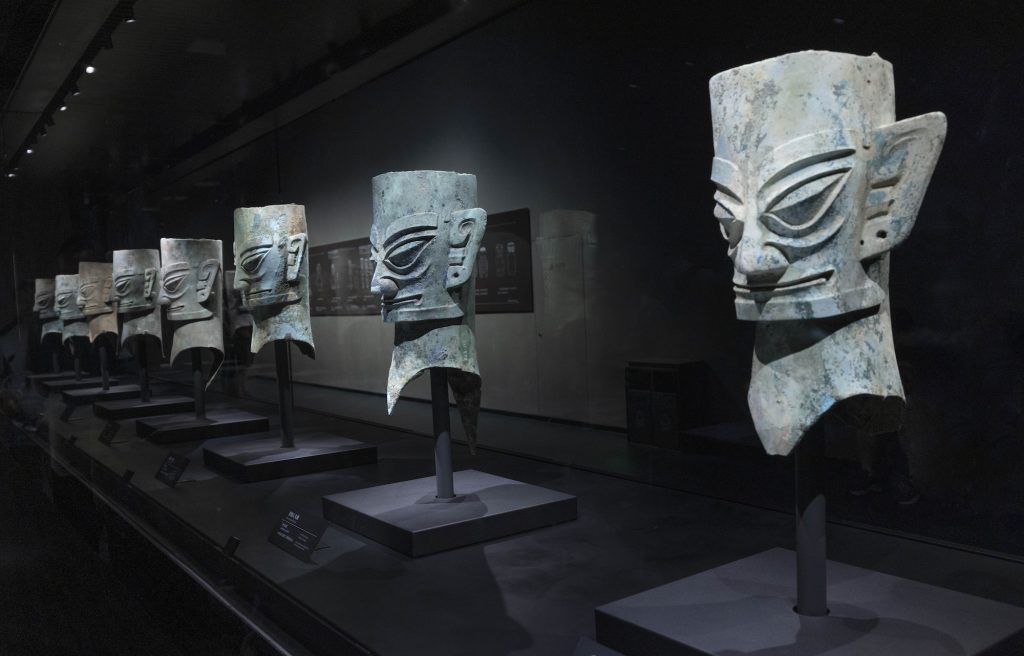
Exhibition view from Hong Kong Palace Museum. Image: courtesy Hong Kong Palace Museum.
The exhibition in Hong Kong was timed to coincide with China’s National Day on October 1 and, accordingly, arrives with a political bent; as the museum’s director Louis Ng said in a statement, there’s “the aim of the deepening understanding of the formation and development of the 5,000-year Chinese civilization.” Among its revelations is the banishing of the notion of Sichuan as a cultural backwater. Instead, it evidences a thriving and complex civilization that flourished far from the Yellow River valley. Sanxingdui complicates Chinese history—and wonderfully so.
“Gazing at Sanxingdui: New Archaeological Discoveries in Sichuan” is on view through January 8, 2024, at the Hong Kong Palace Museum. See images of the show below.
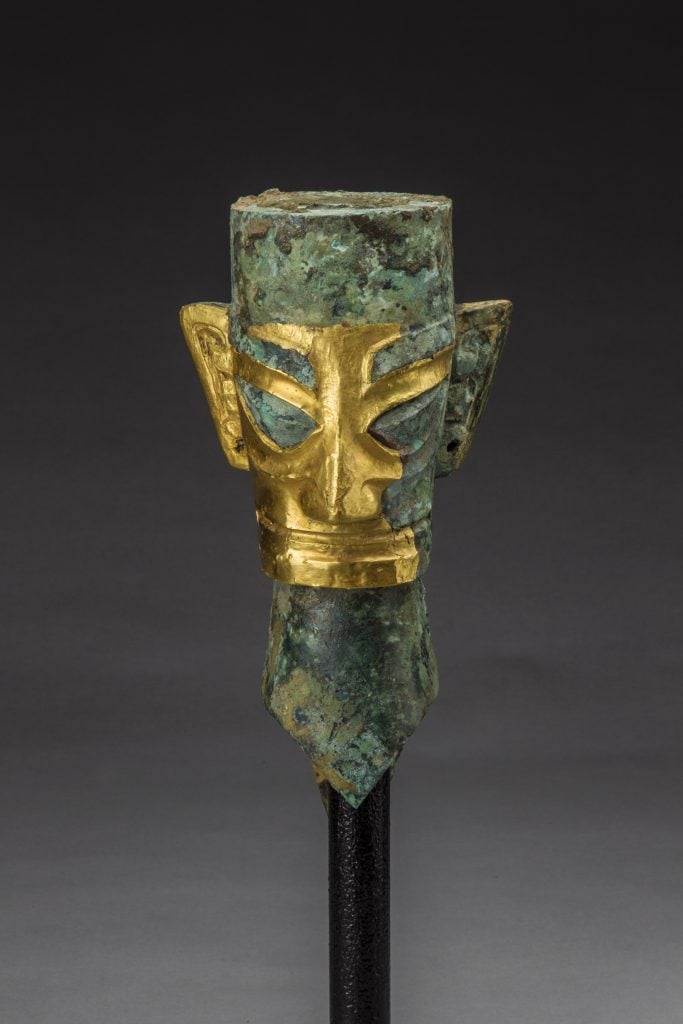
Human head with gold mask 1300 – 1100 BCE, Bronze. Image: courtesy Sanxingdui Museum.
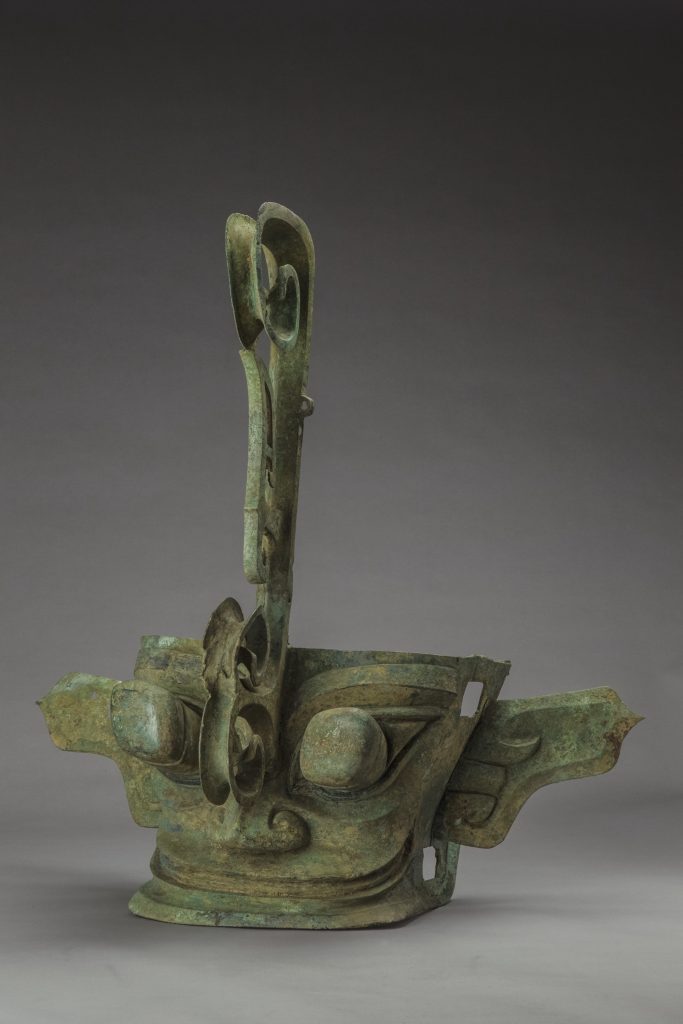
Mask with protruding pupils, 1300 –1100 BCE, bronze. Image: courtesy Sanxingdui Museum.
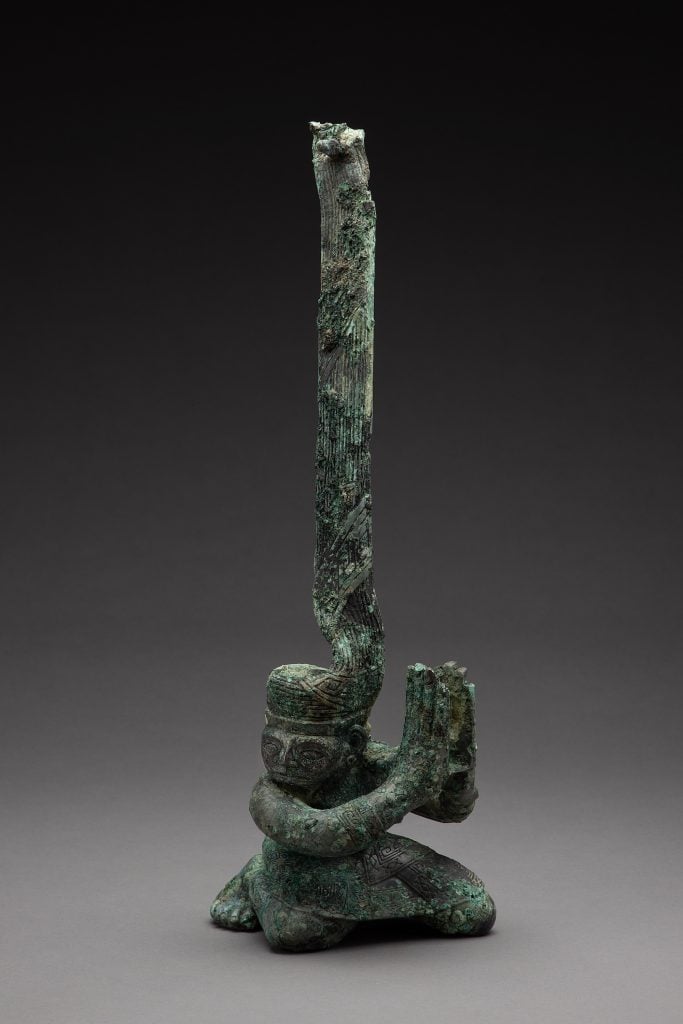
Kneeling figure with twisted head, 1300 – 1100 BCE, Bronze. Image: courtesy Sanxingdui Museum.
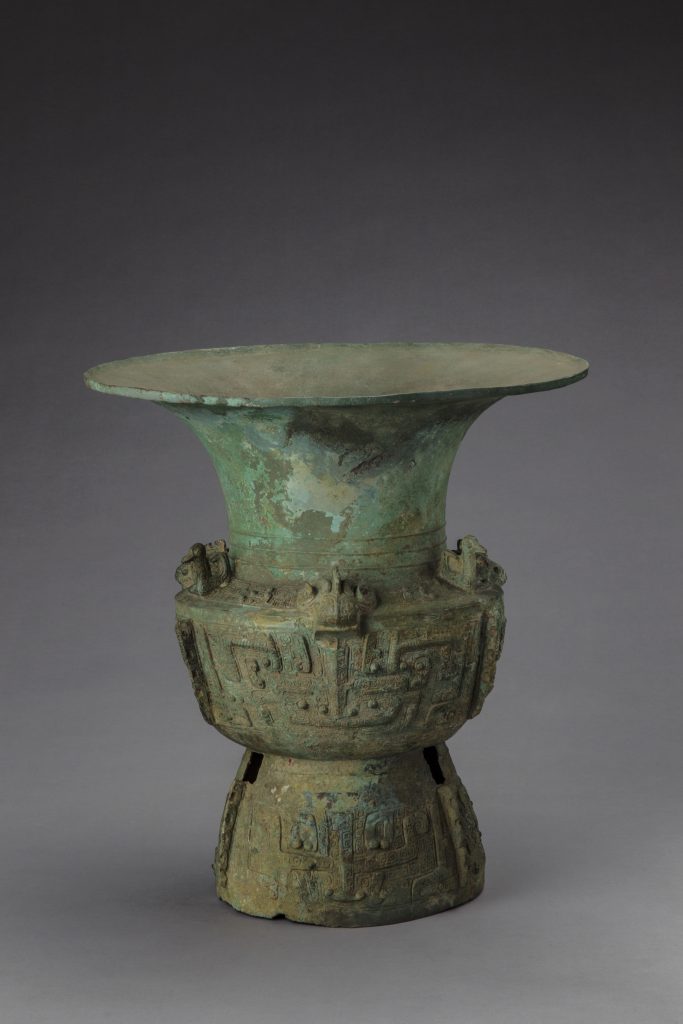
Zun Vessel, 1300–1100 BCE, Bronze. Image: Image: courtesy Sanxingdui Museum.
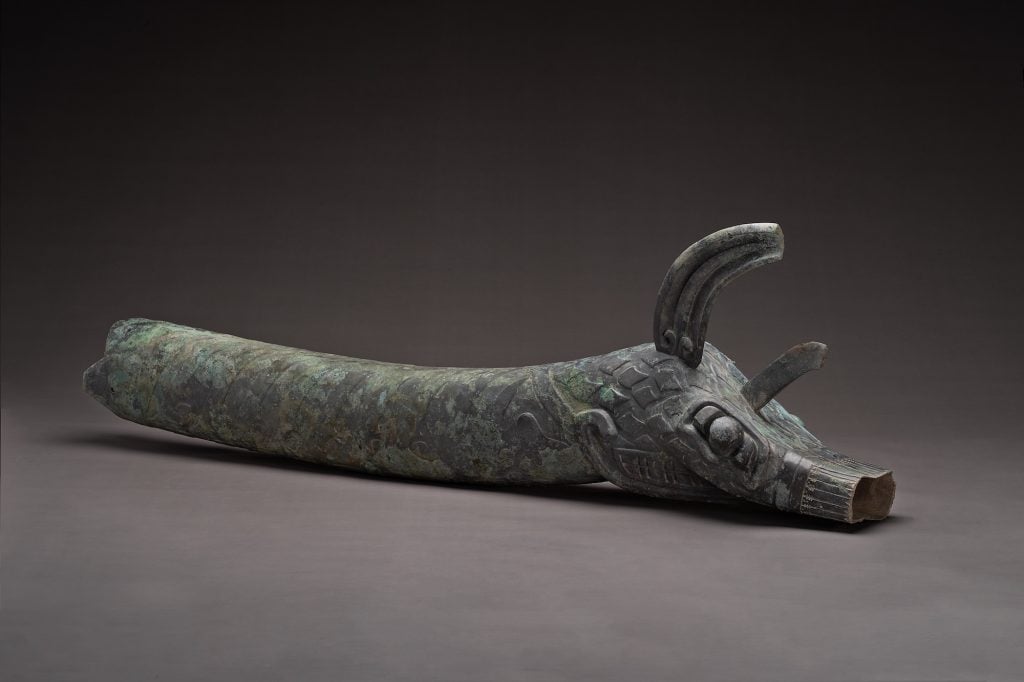
Dragon-shaped object, 1300–1100 BCE, Bronze. Image: courtesy Sanxingdui Museum.
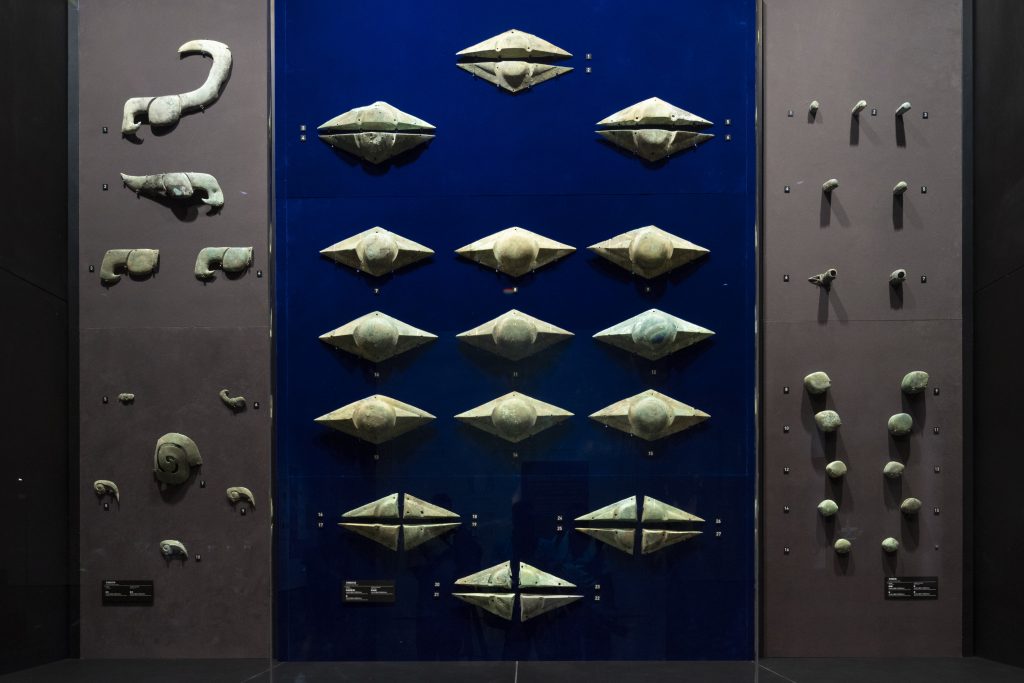
Exhibition view from Hong Kong Palace Museum. Image: courtesy Hong Kong Palace Museum.
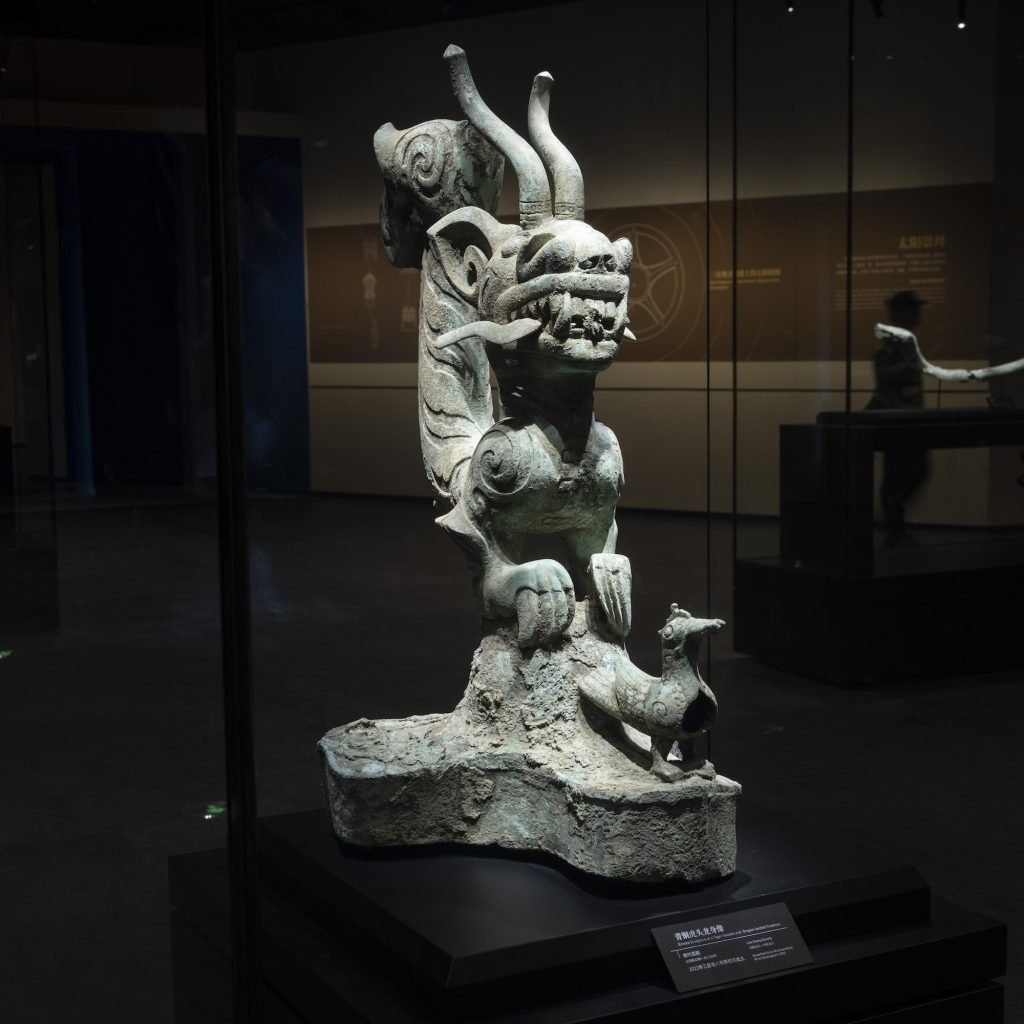
Exhibition view from Hong Kong Palace Museum. Image: courtesy Hong Kong Palace Museum.
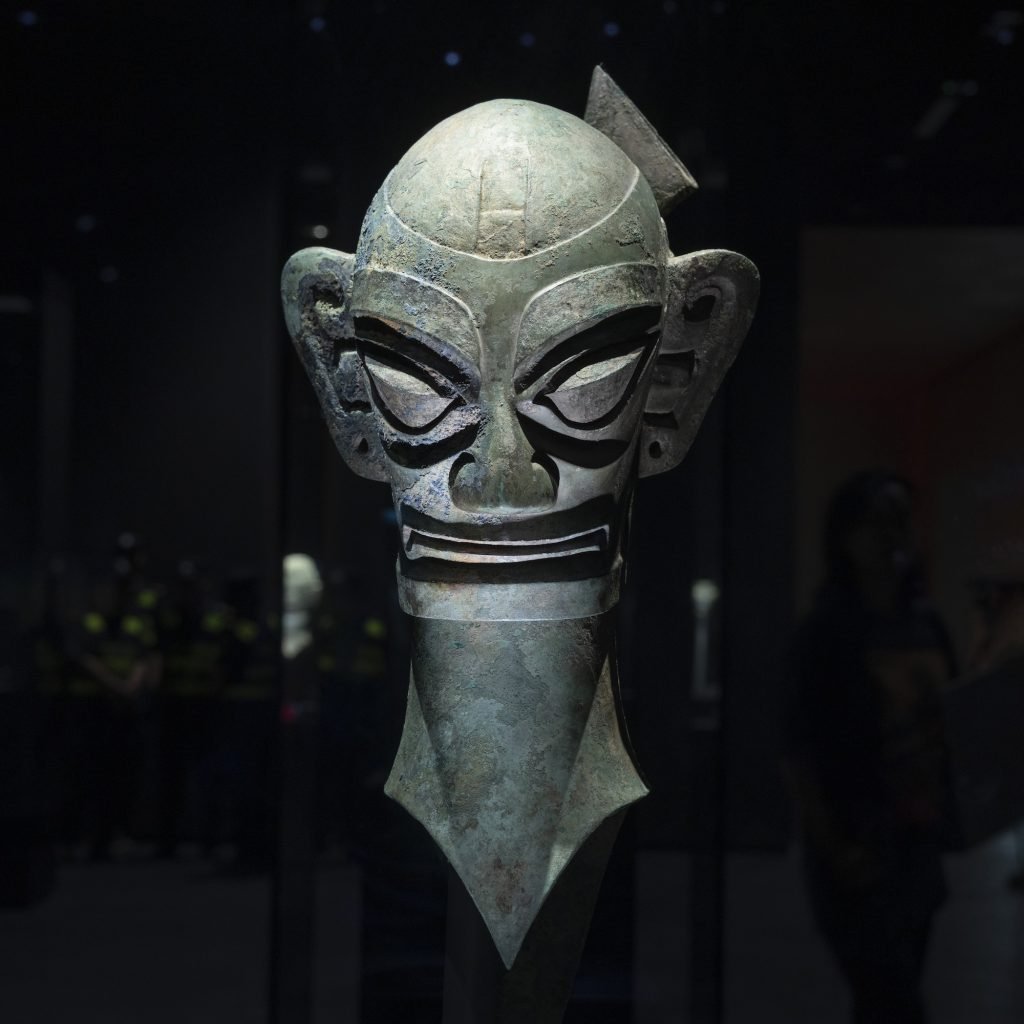
Exhibition view from Hong Kong Palace Museum. Image: courtesy Hong Kong Palace Museum.
Follow Artnet News on Facebook:
Want to stay ahead of the art world? Subscribe to our newsletter to get the breaking news, eye-opening interviews, and incisive critical takes that drive the conversation forward.
